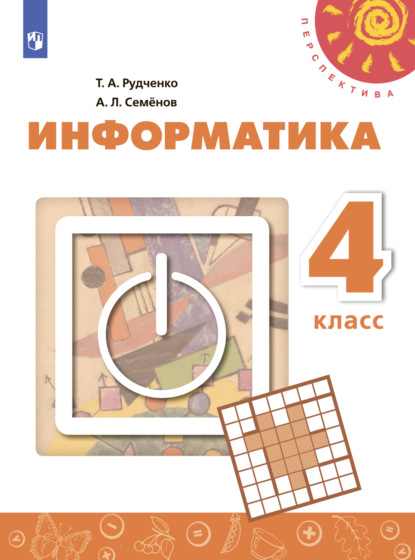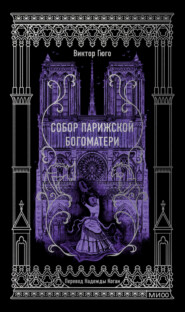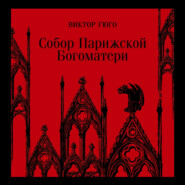По всем вопросам обращайтесь на: info@litportal.ru
(©) 2003-2024.
✖
Les Misérables, v. 2
Настройки чтения
Размер шрифта
Высота строк
Поля
Two very strict Duchesses, Mesdames de Choiseul and de Serent, frequently visited the community, doubtless by virtue of their privilege as Magnates Mulieres, and terribly frightened the boarders. When the two old ladies passed, all the poor girls trembled and let their eyes fall. M. de Rohan was, besides, unwittingly the object of attention among the boarders. He had just been appointed, while waiting for a bishopric, Grand Vicar of the Archbishop of Paris, and it was one of his habits to serve mass in the chapel of the Little Picpus Convent. Not one of the young recluses could see him, on account of the baize curtain; but he had a soft and rather shrill voice, which they had managed to recognize and distinguish. He had been a Mousquetaire; and besides, he was said to be somewhat of a dandy, had fine chestnut hair curled round his head, wore a wide scarf of magnificent moire, and his black cassock was cut in the most elegant style. He greatly occupied all their youthful imaginations. No external sound penetrated the convent, and yet one year the sound of a flute reached it. It was an event, and the boarders of that day still remember it. It was a flute which some one was playing in the neighborhood: it was the same tune, one now very aged, "Ma Zétulbé, viens regner sur mon âme," and it was heard two or three times a day. The girls spent hours in listening, the vocal mothers were upset, brains were at work, and punishments were constant. This lasted several months; the boarders were more or less enamoured of the unknown musician, and each fancied herself Zétulbé. The sound of the flute came from the direction of the Rue Droit-mur. They would have given anything, compromised anything, attempted anything, in order to see, if only for a moment, the young man who played the flute so exquisitely, and at the same time played on all their minds. Some of them slipped out through a back door and ascended to the third story looking out of the street, in order to try and see him through the grating; but it was impossible. One went so far as to pass her arm between the bars and wave her white handkerchief. Two others were even bolder; they managed to climb on to the roof, and at length succeeded in seeing the "young man." It was an old émigré gentleman, blind and ruined, who played the flute in his garret in order to kill time.
CHAPTER VI
THE LITTLE CONVENT
There were within the walls of Little Picpus three perfectly distinct buildings, – the great convent inhabited by the nuns, the schoolhouse in which the boarders were lodged, and, lastly, what was called the little convent. The latter was a house with a garden, in which all sorts of old nuns of various orders, the remains of convents broken up in the Revolution, dwelt in common; a reunion of all the black, white, and gray gowns of all the communities, and all the varieties possible; what might be called, were such a conjunction of words permissible, a hotch-potch convent. Under the Empire all these dispersed and homeless women were allowed to shelter themselves under the wings of the Bernardo-Benedictines; the Government paid them a small pension, and the ladies of Little Picpus eagerly received them. It was a strange pell-mell, in which each followed her rule. At times the boarders were allowed, as a great recreation, to pay them a visit, and it is from this that these young minds have retained a recollection of Holy Mother Bazile, Holy Mother Scholastica, and Mother Jacob.
One of these refugees was almost at home here; she was a nun of Sainte Aure, the only one of her order who survived. The old convent of the ladies of Sainte Aure occupied at the beginning of the 18th century the same house which at a later date belonged to the Benedictines of Martin Verga. This holy woman, who was too poor to wear the magnificent dress of her order, which was a white robe with a scarlet scapulary, had piously dressed up in it a small doll, which she was fond of showing, and left at her death to the house. In 1820 only one nun of this order remained; at the present day only a doll is left. In addition to these worthy mothers, a few old ladies of the world, like Madame Albertine, had gained permission from the prioress to retire into the little convent. Among them were Madame de Beaufort d'Hautpoul and the Marquise Dufresne; another was only known in the convent by the formidable noise she made in using her handkerchief, and hence the boarders called her Madame Vacarmini. About the year 1820 Madame de Genlis, who edited at that period a small periodical called L'Intrépide, asked leave to board at the Little Picpus, and the Duc d'Orleans recommended her. There was a commotion in the hive, and the vocal mothers were all of a tremor, for Madame de Genlis had written romances; but she declared that she was the first to detest them, and moreover she had reached her phase of savage devotion. By the help of Heaven and of the prince she entered, and went away again at the end of six or eight months, alleging as a reason that the garden had no shade. The nuns were delighted at it. Although very old, she still played the harp, and remarkably well too. When she went away she left her mark on her cell. Madame de Genlis was superstitious and a Latin scholar, and these two terms give a very fair idea of her. A few years ago there might still be seen, fixed in the inside of a small cupboard of her cell, in which she kept her money and jewelry, the following five Latin verses, written in her own hand with red ink on yellow paper, and which, in her opinion, had the virtue of frightening away robbers: —
"Imparibus meritis pendent tria corpora ramis:
Dismas et Gesmas, media est divina potestas:
Alta petit Dismas, infelix, infima, Gesmas:
Nos et res nostras conservet summa potestas.
Hos versus dicas, ne tu furto tua perdas."
These verses, in sixteenth-century Latin, raise the question whether the two thieves of Calvary were called, as is commonly believed, Demas and Gestas, or Dismas and Gesmas. The latter orthography would thwart the claims made in the last century by the Viscomte de Gestas to be descended from the wicked thief. However, the useful virtue attached to these verses is an article of faith in the order of the Hospitaler nuns. The church, so built as to separate the great convent from the boarding-school, was common to the school, and the great and little convents. The public were even admitted by a sort of quarantine entrance from the street: but everything was so arranged that not one of the inhabitants of the convent could see a single face from the outer world. Imagine a church whose choir was seized by a gigantic hand, and crushed so as no longer to form, as in ordinary chapels, a prolongation behind the altar, but a sort of obscure cavern on the side of the officiating priest; imagine this hall closed by the green baize curtain to which we have referred; pile up in the shadow of this curtain upon wooden seats the nuns on the left, the boarders on the right, and the lay sisters and novices at the end, and you will have some idea of the Little Picpus nuns attending divine service. This cavern, which was called the choir, communicated with the convent by a covered way, and the church obtained its light from the garden. When the nuns were present at those services at which their rule commanded silence, the public were only warned of their presence by the sound of the seats being noisily raised and dropped.
CHAPTER VII
A FEW PROFILES FROM THE SHADOW
During the six years between 1819 and 1825 the prioress of Little Picpus was Mademoiselle de Blémeur, called in religion Mother Innocent. She belonged to the family of that Marguerite de Blémeur who was authoress of the "Lives of the Saints of the Order of Saint Benedict." She was a lady of about sixty years, short, stout, and with a voice "like a cracked pot," says the letter from which we have already quoted; but she was an excellent creature, the only merry soul in the convent, and on that account adored. She followed in the footsteps of her ancestress Marguerite, the Dacier of the order; she was lettered, learned, competent, versed in the curiosities of history, stuffed with Latin, Greek, and Hebrew, and more a monk than a nun. The sub-prioress was an old Spanish nun, almost blind, Mother Cineres. The most estimated among the "vocals" were – Mother Saint Honorine, the treasurer; Mother Saint Gertrude, first mistress of the novices; Mother Saint Ange, second mistress; Mother Annunciation, sacristan; Mother Saint Augustine, head of the infirmary, the only unkind person in the convent; then Mother Saint Mechtilde (Mlle. Gauvain), who was young, and had an admirable voice; Mother des Auges (Mlle. Drouet), who had been in the convent of the Filles Dieu, and that of the Treasury near Gisors; Mother Saint Joseph (Mlle. de Cogolludo); Mother Saint Adelaide (Mlle. D'Auverney); Mother Miséricorde (Mlle. de Cifuentes, who could not endure the privations); Mother Compassion (Mlle. de La Miltière, received at the age of sixty, contrary to the rule, but very rich); Mother Providence (Mlle. de Laudinière); Mother Presentation (Mlle. de Siguenza), who was prioress in 1847; and lastly, Mother Saint Céligne (sister of Cerachhi the sculptor), who went mad; and Mother Saint Chantal (Mlle. de Suzon), who also went mad. Among the prettiest was a charming girl of three-and-twenty, who belonged to the Bourbonnais, and was descended from the Chevalier Roze, who was called in the world Mlle. Roze, and in religion Mother Assumption.
Mother Saint Mechtilde, who had charge of the singing arrangements, was glad to make use of the boarders for this purpose; she generally selected a complete musical scale, that is to say, seven assorted voices, from ten to sixteen years inclusive, whom she drew up in a line, ranging from the shortest to the tallest. In this way she produced a species of living Pandean pipes, composed of angels. The lay sisters whom the boarders liked most were Sister Saint Euphrasie, Sister Saint Marguerite, Sister Saint Marthe, who was childish, and Sister Saint Michel, at whose long nose they laughed. All these nuns were kind to the children, and only stern to themselves; there were no fires lit except in the schoolhouse, and the food there was luxurious when compared with that of the convent. The only thing was that when a child passed a nun and spoke to her, the latter did not answer. This rule of silence produced the result that in the whole convent language was withdrawn from human creatures and given to inanimate objects. At one moment it was the church bell that spoke, at another the gardener's; and a very sonorous gong, placed by the side of the sister porter, and which could be heard all through the house, indicated by various raps, which were a sort of acoustic telegraphy, all the actions of natural life which had to be accomplished, and summoned a nun, if required, to the parlor. Each person and each thing had its raps: the prioress had one and one, the sub-prioress one and two; six-five announced school hour, so that the pupils talked of going to six-five; four-four was Madame Genlis' signal, and as it was heard very often, uncharitable persons said she was the "diable à quatre." Nineteen strokes announced a great event; it was the opening of the cloister door, a terrible iron plate all bristling with bolts, which only turned on its hinges before the archbishop. With the exception of that dignitary and the gardener, no other man entered the convent; but the boarders saw two others, – one was the chaplain, Abbé Banès, an old ugly man, whom they were allowed to contemplate through a grating; while the other was M. Ansiaux, the drawing-master, whom the letter which we have already quoted calls "M. Anciot," and describes as an odious old hunchback. So we see that all the men were picked.
Such was this curious house.
CHAPTER VIII
POST CORDA LAPIDES
After sketching the moral figure, it may not be time lost to indicate in a few words the material configuration, of which the reader already possesses some idea.
The convent of the Little Picpus occupied a large trapeze, formed by the four streets to which we have so frequently alluded, and which surrounded it like a moat. The convent was composed of several buildings and a garden. The main building, regarded in its entirety, was a juxtaposition of hybrid constructions, which, looked at from a balloon, would very exactly form a gallows laid on the ground. The long arm of the gallows occupied the whole of the Rue Droit-mur, comprised between the Little Rue Picpus and the Rue Polonceau; while the shorter arm was a tall, gray, stern, grated façade, looking on the Little Rue Picpus, of which the carriage-entrance, No. 62, was the extremity. Toward the centre of this façade dust and ashes whitened an old, low-arched gate, where the spiders made their webs, and which was only opened for an hour or two on Sundays, and on the rare occasions when the coffin of a nun left the convent; this was the public entrance to the church. The elbow of the gallows was a square room, used as an office, and which the nuns called the "buttery." In the long arm were the cells of the mothers, sisters, and novices; in the short one the kitchens, the refectory, along which a cloister ran, and the church. Between No. 62 and the corner of Aumarais Lane was the school, which could not be seen from the exterior. The rest of the trapeze formed the garden, which was much lower than the level of the Rue Polonceau, and this caused the walls to be much loftier inside than out. The garden, which was slightly arched, had at its centre and on the top of a mound a fine-pointed and conical fir-tree, from which ran, as from the boss of a shield, four large walks, with eight smaller ones arranged two and two, so that, had the enclosure been circular, the geometrical plan of the walks would have resembled a cross laid upon a wheel. The walks, which all ran to the extremely irregular walls of the garden, were of unequal length, and were bordered by gooseberry-bushes. At the end a poplar walk ran from the ruins of the old convent, which was at the angle of the Rue Droit-mur, to the little convent, which was at the corner of Aumarais Lane. In front of the little convent was what was called the small garden. If we add to this ensemble a court-yard, all sorts of varying angles formed by the inside buildings, prison walls, and the long black line of roofs that ran along the other side of the Rue Polonceau, as the sole prospect, we can form an exact idea of what the house of the Bernardines of Little Picpus was five-and-forty years ago. This sacred house was built on the site of a famous racket-court in the 16th century, which was called the "Tripot des onze mille diables." All these streets, indeed, were the oldest in Paris; the names Droit-mur and Aumarais are very old, but the streets that bear them are far older. Aumarais Lane was before called Maugout Lane; the Rue Droit-mur was called the Rue des Eglantines, for God opened the flowers before man cut building-stones.
CHAPTER IX
A CENTURY UNDER A WIMPLE
As we are giving details of what was formerly the Little Picpus convent, and have ventured to let in light upon this discreet asylum, the reader will perhaps permit us another slight digression, which has nothing to do with the story, but is characteristic and useful in so far as it proves that a convent can have its original people. There was in the little convent a centenarian, who came from the Abbey of Fontevrault, and before the Revolution she had even been in the world. She talked a good deal about M. de Miromesnil, keeper of the seals under Louis XVI., and the wife of a President Duplat, who had been a great friend of hers. It was her pleasure and vanity to drag in these two names on every possible occasion. She told marvels about the Abbey of Fontevrault, which was like a town, and there were streets in the convent. She spoke with a Picard accent which amused the boarders; every year she renewed her vows, and at the moment of taking the oath would say to the priest: "Monseigneur St. Francis took it to. Monseigneur St. Julien, Monseigneur St. Julien took it to Monseigneur St. Eusebius, Monseigneur St. Eusebius took it to Monseigneur St. Procopius, etc., etc., and thus I take it to you, father." And the boarders would laugh, not in their sleeves, but under their veils, – a charming little suppressed laugh, which made the vocal mothers frown.
At other times the centenarian told anecdotes. She said that in her youth the Bernardines took precedence of the Musqueteers; it was a century that spoke, but it was the 18th century. She described the Champenois and Burgundian custom of the four wines before the Revolution. When a great personage, a marshal of France, a prince, a duke and peer, passed through a town of Champagne or Burgundy, the authorities addressed and presented him with four silver cups filled with four different sorts of wine. On the first cup was the inscription "ape-wine," on the second "lion-wine," on the third "sheep-wine," and on the fourth "hog-wine." These four mottoes expressed the four stages of intoxication, – the first that enlivens, the second that irritates, the third that dulls, and the fourth that brutalizes.
She had a mysterious object, to which she was greatly attached, locked up in a cupboard, and the rule of Fontevrault did not prohibit this. She would not show it to anybody; she locked herself in, which her rule also permitted, and hid herself each time that a desire was expressed to see it. If she heard footsteps in the passage she closed the cupboard as hastily as she could with her aged hands. So soon as it was alluded to, she, who was so fond of talking, held her tongue; the most curious persons were foiled by her silence, and the most tenacious by her obstinacy. This was a subject of comment for all the idlers and gossips in the convent. What could this precious and hidden thing be which was the centenarian's treasure? Of course some pious book or unique rosary, or well-tried relic. On the poor woman's death they ran to the cupboard, more quickly perhaps than was befitting, and opened it. They found the object under three folds of linen; it was a Faenza plate representing Cupids flying away, and pursued by apothecaries' apprentices armed with enormous squirts. The pursuit is full of comical grimaces and postures; one of the charming little Cupids is already impaled; he writhes, flutters his wings, and strives to fly away, but the assassin laughs a Satanic laugh. Moral, – love conquered by a colic. This plate, which is very curious, and perhaps had the honor of furnishing Molière with an idea, still existed in September, 1845; it was for sale at a curiosity shop on the Boulevard Beaumarchais. This good old woman would not receive any visitors, "because," as she said, "the parlor is too melancholy."
CHAPTER X
ORIGIN OF THE PERPETUAL ADORATION
This parlor, almost sepulchral, which we have described is a thoroughly local fact, which is not reproduced with the same severity in other convents. In the convent of the Rue du Temple, which, it is true, belonged to another order, brown curtains were substituted for the black shutters, and the parlor itself was a boarded room with white muslin curtains at the windows, while the walls admitted all sorts of pictures, – the portrait of a Benedictine nun with uncovered face, painted bouquets, and even a Turk's head. It was in the garden of this convent that the chestnut tree grew, which was considered the handsomest and largest in France, and which had the reputation among the worthy eighteenth-century folk of being "the father of all the chestnut trees in the kingdom." As we said, this convent of the Temple was occupied by Benedictines of the Perpetual Adoration, who greatly differed from those Benedictines who descended from Citeaux. This order of the Perpetual Adoration is not the oldest, and does not date back beyond two hundred years. In 1640 the Holy Sacrament was twice profaned at an interval of a few days, in two parish churches, St. Sulpice and St. Jean en Grève, – a frightful and rare sacrilege which stirred up the whole city. The Prior Grand-Vicar of St. Germain-des-Près ordered a solemn procession of all his clergy, in which the Papal Nuncio officiated, but this expiation was not sufficient for two worthy ladies, Madame Courtin, Marquise de Boucs, and the Countess de Châteauvieux. This outrage done to the "most august Sacrament of the Altar," though transient, would not leave their pious minds, and it seemed to them that it could alone be repaired by a "Perpetual Adoration" in some nunnery. In 1652 and 1653 both gave considerable sums of money to Mother Catharine de Bar, called of the Holy Sacrament and a Benedictine nun, for the purpose of founding for this pious object a convent of the order of St. Benedict. The first permission for this foundation was given to Mother Catharine de Bar by M. de Metz, Abbé of St. Germain, "on condition that no person should be received unless she brought a pension of three hundred livres, or a capital sum of six thousand livres." After this the king granted letters-patent, which were countersigned in 1654 by the Chamber of Accounts and the Parliament.
Such are the origin and legal consecration of the establishment of the Benedictines of the Perpetual Adoration of the Holy Sacrament at Paris. Their first convent was built for them in the Rue Cassette, with the funds of Mesdames de Boucs and Châteauvieux. This order, as we see, must not be confounded with the Benedictines of Citeaux. It was a dependency of the Abbé of Saint Germain-des-Près, in the same manner as the Ladies of the Sacred Heart are subjects of the general of the Jesuits, and the Sisters of Charity of the general of the Lazarists. It was also entirely different from the order of the Bernardines of Little Picpus, whose interior we have just shown. In 1657 Pope Alexander VII. authorized, by special brief, the Bernardines of Little Picpus to practise the Perpetual Adoration like the Benedictines of the Holy Sacrament, but the two orders did not remain the less distinct.
CHAPTER XI
THE END OF LITTLE PICPUS
Toward the beginning of the Restoration, Little Picpus began to pine away; it shared in the general death of the order, which after the eighteenth century began to decay, like all religious orders. Contemplation, like prayer, is a want of humanity; but, like all that the revolution has touched, it will be transformed, and will become favorable to human progress, instead of being hostile to it. The house of Little Picpus became rapidly depopulated. In 1840 the little convent and the school had disappeared; there were no old women or young girls left; the former were dead, the latter had fled away. Volaverunt.
The rule of the Perpetual Adoration is so strict that it horrifies; novices hold back, and the order is not recruited. In 1845 a few lay sisters were still found here and there, but no professed nuns. Forty years ago there were nearly one hundred nuns; fifteen years ago there were only twenty-eight; how many are there now? In 1847 the prioress was young, a sign that the choice was becoming restricted. She was not forty years old. In proportion as the number diminishes the fatigue is augmented; the service of each becomes more painful; and the moment may be seen approaching at which there will be only a dozen sore and bent shoulders to bear the heavy rule of St. Benedict. The burden is implacable, and remains the same for the few as for the many; it used to press, but now it crushes. Hence they die out. At the time when the author of this book still resided in Paris two died, – one twenty-five, the other twenty-three years of age. The latter can say, like Julia Alpinula: Hic jaceo. Vixi annos viginti et tres. It is owing to this decadence that the convent has given up the education of girls.
We were unable to pass by this extraordinary, unknown, and obscure house without entering it, and taking with us those who are reading – we trust with some advantage to themselves – the melancholy story of Jean Valjean. We have penetrated into this community so full of those old practices which seem so novel at the present day. It is a closed garden. Hortus conclusus. We have spoken of this singular spot in detail, but with respect, so far, at least, as respect and detail are compatible. We do not understand everything, but we insult nothing. We keep at an equal distance from the hosanna of Joseph de Maistre, who ended by consecrating the hangman, and the sneers of Voltaire, who even jeered at the crucifix.
There is a lack of logic in Voltaire's attitude, be it said in passing; for Voltaire ought to have defended Jesus as he defended Calas; and even for those who deny the Divine incarnation, what does the crucifix stand for? The good man murdered. In the nineteenth century the religious idea is undergoing a crisis. We unlearn some things, and we do well, provided that in unlearning one thing, we learn another. There must be no vacuum in the heart of man. Some demolitions are made, and it is well that they should be made, but only on condition that they shall be followed by reconstructions.
In the meanwhile let us study the things which are past. It is necessary to know them were it only to avoid them. The counterfeits of the past take on false names, and try to pass themselves off for the future. This ghost, the past, may falsify his passport. We must learn to unmask the trick. We must be on our guard against it. The past has a face, superstition; and a mask, hypocrisy. We must identify the face, and tear off the mask.
As for the convents, they offer a complex question, – a question of civilization which condemns them, a question of liberty which protects them.
BOOK VII
A PARENTHESIS
CHAPTER I
THE CONVENT AS AN ABSTRACT IDEA
This book is a drama in which the hero is the Infinite. The second character is Man.
Under these circumstances, as a convent happens to lie on our road, we ought to enter it. Why? Because the convent, which belongs as much to the East as to the West, to antiquity as to modern times, to Paganism, to Buddhism, to Mahometanism, as to Christianity, is one of the lenses which man brings to bear on the Infinite.
This is no place to develop unrestrictedly certain ideas; still, while we maintain absolutely our reservations, our restrictions, and even our indignation, we ought to acknowledge, that whenever we find in man the sense of the Infinite, well or ill conceived, we are seized with a feeling of respect. In the synagogue, in the mosque, in the pagoda, in the wigwam, there is a repulsive side which we detest, and a sublime side which we reverence. What a subject for meditation for the spirit, and what a boundless revery is the reverberation of God on the human wall!
CHAPTER II
THE CONVENT AS AN HISTORICAL FACT
From the point of view of history, of reason, and of truth, monastic life must be condemned.
Monasteries when they abound in a nation are tourniquets applied to circulation, oppressive fixtures, centres of idleness where centres of activity are needed. Monastic communities bear the same relation to the great community of society that the mistletoe does to the oak, or the wart to the human body. Their prosperity and their plumpness are the impoverishment of the country. The rule of the monastery, salutary at the beginning of civilizations, useful in bringing about the subjugation of brutality by the spiritual, is harmful in the ripe strength of a nation. Further, when it relaxes and when it enters into its period of decadence, as it still sets the example, it becomes harmful by the very reasons which made it healthful in its time of purity.
The cloister has had its day. Monasteries, helpful to the early education of modern civilization, have checked its growth, and hindered its development. As an educating force and a means of formation for man, the monasteries, good in the tenth century, questionable in the fifteenth, are abominable in the nineteenth. The monastic leprosy has eaten almost to the bone two great nations, Italy and Spain, the one the light, the other the splendor of Europe for ages; and at our own time, these two illustrious nations have only begun to heal, thanks to the strong and vigorous treatment of 1789.
The convent, the old convent for women especially, such as it still appeared at the threshold of this century, in Italy, in Austria, in Spain, is one of the most gloomy concretions of the Middle Ages. The cloister, this very cloister, is the point of intersection of terrors. The Catholic cloister, rightly so-called, is all filled with the black rays of death.
The Spanish convent is especially doleful. There in the dim light, under misty arches, beneath domes made vague by the shadows, rise altars massive as the Tower of Babel, lofty as cathedrals; there in the gloom huge white crucifixes hang by chains; there stand out naked against the ebony background, huge white Christs of ivory – more than bloody, bleeding; frightful yet grand, the elbows showing the bone, the kneepans showing the ligaments, the wounds showing the flesh; crowned with thorns of silver, nailed with nails of gold, with drops of blood in rubies on the forehead and tears of diamonds in the eyes. The diamonds and rubies look wet, and draw tears from those down below in the gloom, – veiled beings, whose sides are wounded by the hair shirt and by the scourge with iron points, their bosoms crushed by wicker jackets, their knees galled by prayer; women who believe themselves brides, spectres who believe themselves seraphim. Do these women ever think? No. Have they wills? No. Do they love? No. Do they live? No. Their nerves have turned to bone, their bones to stone. Their veil is woven of the night. Their breathing under the veil is like some tragic respiration of death. Their abbess, a phantom, hallows them and terrifies them. The Immaculate is there, implacable. Such are the old monasteries of Spain. Retreats of fearful devotion, caves of virgins, savage wildernesses.
Catholic Spain was more Roman than Rome itself. The Spanish convent was pre-eminently the Catholic convent. It had a touch of the East about it. The Archbishop, kislar-agar of heaven, locked up and watched this seraglio of souls reserved for God. The nun was the odalisque, the priest was the eunuch. The devoted were chosen in their dreams, and possessed Christ. By night the beautiful young man descended naked from the cross and became the rapture of the cell. High walls guarded from every living distraction the mystic sultana who had for her sultan the Crucified One. A mere glance outside was an infidelity. The in pace took the place of the leather sack. What they threw into the sea in the East, they threw into the earth in the West. In both places, women's arms were writhing; for these the sea, for those the grave; here the drowned, there the buried. Dreadful analogy!
CHAPTER VI
THE LITTLE CONVENT
There were within the walls of Little Picpus three perfectly distinct buildings, – the great convent inhabited by the nuns, the schoolhouse in which the boarders were lodged, and, lastly, what was called the little convent. The latter was a house with a garden, in which all sorts of old nuns of various orders, the remains of convents broken up in the Revolution, dwelt in common; a reunion of all the black, white, and gray gowns of all the communities, and all the varieties possible; what might be called, were such a conjunction of words permissible, a hotch-potch convent. Under the Empire all these dispersed and homeless women were allowed to shelter themselves under the wings of the Bernardo-Benedictines; the Government paid them a small pension, and the ladies of Little Picpus eagerly received them. It was a strange pell-mell, in which each followed her rule. At times the boarders were allowed, as a great recreation, to pay them a visit, and it is from this that these young minds have retained a recollection of Holy Mother Bazile, Holy Mother Scholastica, and Mother Jacob.
One of these refugees was almost at home here; she was a nun of Sainte Aure, the only one of her order who survived. The old convent of the ladies of Sainte Aure occupied at the beginning of the 18th century the same house which at a later date belonged to the Benedictines of Martin Verga. This holy woman, who was too poor to wear the magnificent dress of her order, which was a white robe with a scarlet scapulary, had piously dressed up in it a small doll, which she was fond of showing, and left at her death to the house. In 1820 only one nun of this order remained; at the present day only a doll is left. In addition to these worthy mothers, a few old ladies of the world, like Madame Albertine, had gained permission from the prioress to retire into the little convent. Among them were Madame de Beaufort d'Hautpoul and the Marquise Dufresne; another was only known in the convent by the formidable noise she made in using her handkerchief, and hence the boarders called her Madame Vacarmini. About the year 1820 Madame de Genlis, who edited at that period a small periodical called L'Intrépide, asked leave to board at the Little Picpus, and the Duc d'Orleans recommended her. There was a commotion in the hive, and the vocal mothers were all of a tremor, for Madame de Genlis had written romances; but she declared that she was the first to detest them, and moreover she had reached her phase of savage devotion. By the help of Heaven and of the prince she entered, and went away again at the end of six or eight months, alleging as a reason that the garden had no shade. The nuns were delighted at it. Although very old, she still played the harp, and remarkably well too. When she went away she left her mark on her cell. Madame de Genlis was superstitious and a Latin scholar, and these two terms give a very fair idea of her. A few years ago there might still be seen, fixed in the inside of a small cupboard of her cell, in which she kept her money and jewelry, the following five Latin verses, written in her own hand with red ink on yellow paper, and which, in her opinion, had the virtue of frightening away robbers: —
"Imparibus meritis pendent tria corpora ramis:
Dismas et Gesmas, media est divina potestas:
Alta petit Dismas, infelix, infima, Gesmas:
Nos et res nostras conservet summa potestas.
Hos versus dicas, ne tu furto tua perdas."
These verses, in sixteenth-century Latin, raise the question whether the two thieves of Calvary were called, as is commonly believed, Demas and Gestas, or Dismas and Gesmas. The latter orthography would thwart the claims made in the last century by the Viscomte de Gestas to be descended from the wicked thief. However, the useful virtue attached to these verses is an article of faith in the order of the Hospitaler nuns. The church, so built as to separate the great convent from the boarding-school, was common to the school, and the great and little convents. The public were even admitted by a sort of quarantine entrance from the street: but everything was so arranged that not one of the inhabitants of the convent could see a single face from the outer world. Imagine a church whose choir was seized by a gigantic hand, and crushed so as no longer to form, as in ordinary chapels, a prolongation behind the altar, but a sort of obscure cavern on the side of the officiating priest; imagine this hall closed by the green baize curtain to which we have referred; pile up in the shadow of this curtain upon wooden seats the nuns on the left, the boarders on the right, and the lay sisters and novices at the end, and you will have some idea of the Little Picpus nuns attending divine service. This cavern, which was called the choir, communicated with the convent by a covered way, and the church obtained its light from the garden. When the nuns were present at those services at which their rule commanded silence, the public were only warned of their presence by the sound of the seats being noisily raised and dropped.
CHAPTER VII
A FEW PROFILES FROM THE SHADOW
During the six years between 1819 and 1825 the prioress of Little Picpus was Mademoiselle de Blémeur, called in religion Mother Innocent. She belonged to the family of that Marguerite de Blémeur who was authoress of the "Lives of the Saints of the Order of Saint Benedict." She was a lady of about sixty years, short, stout, and with a voice "like a cracked pot," says the letter from which we have already quoted; but she was an excellent creature, the only merry soul in the convent, and on that account adored. She followed in the footsteps of her ancestress Marguerite, the Dacier of the order; she was lettered, learned, competent, versed in the curiosities of history, stuffed with Latin, Greek, and Hebrew, and more a monk than a nun. The sub-prioress was an old Spanish nun, almost blind, Mother Cineres. The most estimated among the "vocals" were – Mother Saint Honorine, the treasurer; Mother Saint Gertrude, first mistress of the novices; Mother Saint Ange, second mistress; Mother Annunciation, sacristan; Mother Saint Augustine, head of the infirmary, the only unkind person in the convent; then Mother Saint Mechtilde (Mlle. Gauvain), who was young, and had an admirable voice; Mother des Auges (Mlle. Drouet), who had been in the convent of the Filles Dieu, and that of the Treasury near Gisors; Mother Saint Joseph (Mlle. de Cogolludo); Mother Saint Adelaide (Mlle. D'Auverney); Mother Miséricorde (Mlle. de Cifuentes, who could not endure the privations); Mother Compassion (Mlle. de La Miltière, received at the age of sixty, contrary to the rule, but very rich); Mother Providence (Mlle. de Laudinière); Mother Presentation (Mlle. de Siguenza), who was prioress in 1847; and lastly, Mother Saint Céligne (sister of Cerachhi the sculptor), who went mad; and Mother Saint Chantal (Mlle. de Suzon), who also went mad. Among the prettiest was a charming girl of three-and-twenty, who belonged to the Bourbonnais, and was descended from the Chevalier Roze, who was called in the world Mlle. Roze, and in religion Mother Assumption.
Mother Saint Mechtilde, who had charge of the singing arrangements, was glad to make use of the boarders for this purpose; she generally selected a complete musical scale, that is to say, seven assorted voices, from ten to sixteen years inclusive, whom she drew up in a line, ranging from the shortest to the tallest. In this way she produced a species of living Pandean pipes, composed of angels. The lay sisters whom the boarders liked most were Sister Saint Euphrasie, Sister Saint Marguerite, Sister Saint Marthe, who was childish, and Sister Saint Michel, at whose long nose they laughed. All these nuns were kind to the children, and only stern to themselves; there were no fires lit except in the schoolhouse, and the food there was luxurious when compared with that of the convent. The only thing was that when a child passed a nun and spoke to her, the latter did not answer. This rule of silence produced the result that in the whole convent language was withdrawn from human creatures and given to inanimate objects. At one moment it was the church bell that spoke, at another the gardener's; and a very sonorous gong, placed by the side of the sister porter, and which could be heard all through the house, indicated by various raps, which were a sort of acoustic telegraphy, all the actions of natural life which had to be accomplished, and summoned a nun, if required, to the parlor. Each person and each thing had its raps: the prioress had one and one, the sub-prioress one and two; six-five announced school hour, so that the pupils talked of going to six-five; four-four was Madame Genlis' signal, and as it was heard very often, uncharitable persons said she was the "diable à quatre." Nineteen strokes announced a great event; it was the opening of the cloister door, a terrible iron plate all bristling with bolts, which only turned on its hinges before the archbishop. With the exception of that dignitary and the gardener, no other man entered the convent; but the boarders saw two others, – one was the chaplain, Abbé Banès, an old ugly man, whom they were allowed to contemplate through a grating; while the other was M. Ansiaux, the drawing-master, whom the letter which we have already quoted calls "M. Anciot," and describes as an odious old hunchback. So we see that all the men were picked.
Such was this curious house.
CHAPTER VIII
POST CORDA LAPIDES
After sketching the moral figure, it may not be time lost to indicate in a few words the material configuration, of which the reader already possesses some idea.
The convent of the Little Picpus occupied a large trapeze, formed by the four streets to which we have so frequently alluded, and which surrounded it like a moat. The convent was composed of several buildings and a garden. The main building, regarded in its entirety, was a juxtaposition of hybrid constructions, which, looked at from a balloon, would very exactly form a gallows laid on the ground. The long arm of the gallows occupied the whole of the Rue Droit-mur, comprised between the Little Rue Picpus and the Rue Polonceau; while the shorter arm was a tall, gray, stern, grated façade, looking on the Little Rue Picpus, of which the carriage-entrance, No. 62, was the extremity. Toward the centre of this façade dust and ashes whitened an old, low-arched gate, where the spiders made their webs, and which was only opened for an hour or two on Sundays, and on the rare occasions when the coffin of a nun left the convent; this was the public entrance to the church. The elbow of the gallows was a square room, used as an office, and which the nuns called the "buttery." In the long arm were the cells of the mothers, sisters, and novices; in the short one the kitchens, the refectory, along which a cloister ran, and the church. Between No. 62 and the corner of Aumarais Lane was the school, which could not be seen from the exterior. The rest of the trapeze formed the garden, which was much lower than the level of the Rue Polonceau, and this caused the walls to be much loftier inside than out. The garden, which was slightly arched, had at its centre and on the top of a mound a fine-pointed and conical fir-tree, from which ran, as from the boss of a shield, four large walks, with eight smaller ones arranged two and two, so that, had the enclosure been circular, the geometrical plan of the walks would have resembled a cross laid upon a wheel. The walks, which all ran to the extremely irregular walls of the garden, were of unequal length, and were bordered by gooseberry-bushes. At the end a poplar walk ran from the ruins of the old convent, which was at the angle of the Rue Droit-mur, to the little convent, which was at the corner of Aumarais Lane. In front of the little convent was what was called the small garden. If we add to this ensemble a court-yard, all sorts of varying angles formed by the inside buildings, prison walls, and the long black line of roofs that ran along the other side of the Rue Polonceau, as the sole prospect, we can form an exact idea of what the house of the Bernardines of Little Picpus was five-and-forty years ago. This sacred house was built on the site of a famous racket-court in the 16th century, which was called the "Tripot des onze mille diables." All these streets, indeed, were the oldest in Paris; the names Droit-mur and Aumarais are very old, but the streets that bear them are far older. Aumarais Lane was before called Maugout Lane; the Rue Droit-mur was called the Rue des Eglantines, for God opened the flowers before man cut building-stones.
CHAPTER IX
A CENTURY UNDER A WIMPLE
As we are giving details of what was formerly the Little Picpus convent, and have ventured to let in light upon this discreet asylum, the reader will perhaps permit us another slight digression, which has nothing to do with the story, but is characteristic and useful in so far as it proves that a convent can have its original people. There was in the little convent a centenarian, who came from the Abbey of Fontevrault, and before the Revolution she had even been in the world. She talked a good deal about M. de Miromesnil, keeper of the seals under Louis XVI., and the wife of a President Duplat, who had been a great friend of hers. It was her pleasure and vanity to drag in these two names on every possible occasion. She told marvels about the Abbey of Fontevrault, which was like a town, and there were streets in the convent. She spoke with a Picard accent which amused the boarders; every year she renewed her vows, and at the moment of taking the oath would say to the priest: "Monseigneur St. Francis took it to. Monseigneur St. Julien, Monseigneur St. Julien took it to Monseigneur St. Eusebius, Monseigneur St. Eusebius took it to Monseigneur St. Procopius, etc., etc., and thus I take it to you, father." And the boarders would laugh, not in their sleeves, but under their veils, – a charming little suppressed laugh, which made the vocal mothers frown.
At other times the centenarian told anecdotes. She said that in her youth the Bernardines took precedence of the Musqueteers; it was a century that spoke, but it was the 18th century. She described the Champenois and Burgundian custom of the four wines before the Revolution. When a great personage, a marshal of France, a prince, a duke and peer, passed through a town of Champagne or Burgundy, the authorities addressed and presented him with four silver cups filled with four different sorts of wine. On the first cup was the inscription "ape-wine," on the second "lion-wine," on the third "sheep-wine," and on the fourth "hog-wine." These four mottoes expressed the four stages of intoxication, – the first that enlivens, the second that irritates, the third that dulls, and the fourth that brutalizes.
She had a mysterious object, to which she was greatly attached, locked up in a cupboard, and the rule of Fontevrault did not prohibit this. She would not show it to anybody; she locked herself in, which her rule also permitted, and hid herself each time that a desire was expressed to see it. If she heard footsteps in the passage she closed the cupboard as hastily as she could with her aged hands. So soon as it was alluded to, she, who was so fond of talking, held her tongue; the most curious persons were foiled by her silence, and the most tenacious by her obstinacy. This was a subject of comment for all the idlers and gossips in the convent. What could this precious and hidden thing be which was the centenarian's treasure? Of course some pious book or unique rosary, or well-tried relic. On the poor woman's death they ran to the cupboard, more quickly perhaps than was befitting, and opened it. They found the object under three folds of linen; it was a Faenza plate representing Cupids flying away, and pursued by apothecaries' apprentices armed with enormous squirts. The pursuit is full of comical grimaces and postures; one of the charming little Cupids is already impaled; he writhes, flutters his wings, and strives to fly away, but the assassin laughs a Satanic laugh. Moral, – love conquered by a colic. This plate, which is very curious, and perhaps had the honor of furnishing Molière with an idea, still existed in September, 1845; it was for sale at a curiosity shop on the Boulevard Beaumarchais. This good old woman would not receive any visitors, "because," as she said, "the parlor is too melancholy."
CHAPTER X
ORIGIN OF THE PERPETUAL ADORATION
This parlor, almost sepulchral, which we have described is a thoroughly local fact, which is not reproduced with the same severity in other convents. In the convent of the Rue du Temple, which, it is true, belonged to another order, brown curtains were substituted for the black shutters, and the parlor itself was a boarded room with white muslin curtains at the windows, while the walls admitted all sorts of pictures, – the portrait of a Benedictine nun with uncovered face, painted bouquets, and even a Turk's head. It was in the garden of this convent that the chestnut tree grew, which was considered the handsomest and largest in France, and which had the reputation among the worthy eighteenth-century folk of being "the father of all the chestnut trees in the kingdom." As we said, this convent of the Temple was occupied by Benedictines of the Perpetual Adoration, who greatly differed from those Benedictines who descended from Citeaux. This order of the Perpetual Adoration is not the oldest, and does not date back beyond two hundred years. In 1640 the Holy Sacrament was twice profaned at an interval of a few days, in two parish churches, St. Sulpice and St. Jean en Grève, – a frightful and rare sacrilege which stirred up the whole city. The Prior Grand-Vicar of St. Germain-des-Près ordered a solemn procession of all his clergy, in which the Papal Nuncio officiated, but this expiation was not sufficient for two worthy ladies, Madame Courtin, Marquise de Boucs, and the Countess de Châteauvieux. This outrage done to the "most august Sacrament of the Altar," though transient, would not leave their pious minds, and it seemed to them that it could alone be repaired by a "Perpetual Adoration" in some nunnery. In 1652 and 1653 both gave considerable sums of money to Mother Catharine de Bar, called of the Holy Sacrament and a Benedictine nun, for the purpose of founding for this pious object a convent of the order of St. Benedict. The first permission for this foundation was given to Mother Catharine de Bar by M. de Metz, Abbé of St. Germain, "on condition that no person should be received unless she brought a pension of three hundred livres, or a capital sum of six thousand livres." After this the king granted letters-patent, which were countersigned in 1654 by the Chamber of Accounts and the Parliament.
Such are the origin and legal consecration of the establishment of the Benedictines of the Perpetual Adoration of the Holy Sacrament at Paris. Their first convent was built for them in the Rue Cassette, with the funds of Mesdames de Boucs and Châteauvieux. This order, as we see, must not be confounded with the Benedictines of Citeaux. It was a dependency of the Abbé of Saint Germain-des-Près, in the same manner as the Ladies of the Sacred Heart are subjects of the general of the Jesuits, and the Sisters of Charity of the general of the Lazarists. It was also entirely different from the order of the Bernardines of Little Picpus, whose interior we have just shown. In 1657 Pope Alexander VII. authorized, by special brief, the Bernardines of Little Picpus to practise the Perpetual Adoration like the Benedictines of the Holy Sacrament, but the two orders did not remain the less distinct.
CHAPTER XI
THE END OF LITTLE PICPUS
Toward the beginning of the Restoration, Little Picpus began to pine away; it shared in the general death of the order, which after the eighteenth century began to decay, like all religious orders. Contemplation, like prayer, is a want of humanity; but, like all that the revolution has touched, it will be transformed, and will become favorable to human progress, instead of being hostile to it. The house of Little Picpus became rapidly depopulated. In 1840 the little convent and the school had disappeared; there were no old women or young girls left; the former were dead, the latter had fled away. Volaverunt.
The rule of the Perpetual Adoration is so strict that it horrifies; novices hold back, and the order is not recruited. In 1845 a few lay sisters were still found here and there, but no professed nuns. Forty years ago there were nearly one hundred nuns; fifteen years ago there were only twenty-eight; how many are there now? In 1847 the prioress was young, a sign that the choice was becoming restricted. She was not forty years old. In proportion as the number diminishes the fatigue is augmented; the service of each becomes more painful; and the moment may be seen approaching at which there will be only a dozen sore and bent shoulders to bear the heavy rule of St. Benedict. The burden is implacable, and remains the same for the few as for the many; it used to press, but now it crushes. Hence they die out. At the time when the author of this book still resided in Paris two died, – one twenty-five, the other twenty-three years of age. The latter can say, like Julia Alpinula: Hic jaceo. Vixi annos viginti et tres. It is owing to this decadence that the convent has given up the education of girls.
We were unable to pass by this extraordinary, unknown, and obscure house without entering it, and taking with us those who are reading – we trust with some advantage to themselves – the melancholy story of Jean Valjean. We have penetrated into this community so full of those old practices which seem so novel at the present day. It is a closed garden. Hortus conclusus. We have spoken of this singular spot in detail, but with respect, so far, at least, as respect and detail are compatible. We do not understand everything, but we insult nothing. We keep at an equal distance from the hosanna of Joseph de Maistre, who ended by consecrating the hangman, and the sneers of Voltaire, who even jeered at the crucifix.
There is a lack of logic in Voltaire's attitude, be it said in passing; for Voltaire ought to have defended Jesus as he defended Calas; and even for those who deny the Divine incarnation, what does the crucifix stand for? The good man murdered. In the nineteenth century the religious idea is undergoing a crisis. We unlearn some things, and we do well, provided that in unlearning one thing, we learn another. There must be no vacuum in the heart of man. Some demolitions are made, and it is well that they should be made, but only on condition that they shall be followed by reconstructions.
In the meanwhile let us study the things which are past. It is necessary to know them were it only to avoid them. The counterfeits of the past take on false names, and try to pass themselves off for the future. This ghost, the past, may falsify his passport. We must learn to unmask the trick. We must be on our guard against it. The past has a face, superstition; and a mask, hypocrisy. We must identify the face, and tear off the mask.
As for the convents, they offer a complex question, – a question of civilization which condemns them, a question of liberty which protects them.
BOOK VII
A PARENTHESIS
CHAPTER I
THE CONVENT AS AN ABSTRACT IDEA
This book is a drama in which the hero is the Infinite. The second character is Man.
Under these circumstances, as a convent happens to lie on our road, we ought to enter it. Why? Because the convent, which belongs as much to the East as to the West, to antiquity as to modern times, to Paganism, to Buddhism, to Mahometanism, as to Christianity, is one of the lenses which man brings to bear on the Infinite.
This is no place to develop unrestrictedly certain ideas; still, while we maintain absolutely our reservations, our restrictions, and even our indignation, we ought to acknowledge, that whenever we find in man the sense of the Infinite, well or ill conceived, we are seized with a feeling of respect. In the synagogue, in the mosque, in the pagoda, in the wigwam, there is a repulsive side which we detest, and a sublime side which we reverence. What a subject for meditation for the spirit, and what a boundless revery is the reverberation of God on the human wall!
CHAPTER II
THE CONVENT AS AN HISTORICAL FACT
From the point of view of history, of reason, and of truth, monastic life must be condemned.
Monasteries when they abound in a nation are tourniquets applied to circulation, oppressive fixtures, centres of idleness where centres of activity are needed. Monastic communities bear the same relation to the great community of society that the mistletoe does to the oak, or the wart to the human body. Their prosperity and their plumpness are the impoverishment of the country. The rule of the monastery, salutary at the beginning of civilizations, useful in bringing about the subjugation of brutality by the spiritual, is harmful in the ripe strength of a nation. Further, when it relaxes and when it enters into its period of decadence, as it still sets the example, it becomes harmful by the very reasons which made it healthful in its time of purity.
The cloister has had its day. Monasteries, helpful to the early education of modern civilization, have checked its growth, and hindered its development. As an educating force and a means of formation for man, the monasteries, good in the tenth century, questionable in the fifteenth, are abominable in the nineteenth. The monastic leprosy has eaten almost to the bone two great nations, Italy and Spain, the one the light, the other the splendor of Europe for ages; and at our own time, these two illustrious nations have only begun to heal, thanks to the strong and vigorous treatment of 1789.
The convent, the old convent for women especially, such as it still appeared at the threshold of this century, in Italy, in Austria, in Spain, is one of the most gloomy concretions of the Middle Ages. The cloister, this very cloister, is the point of intersection of terrors. The Catholic cloister, rightly so-called, is all filled with the black rays of death.
The Spanish convent is especially doleful. There in the dim light, under misty arches, beneath domes made vague by the shadows, rise altars massive as the Tower of Babel, lofty as cathedrals; there in the gloom huge white crucifixes hang by chains; there stand out naked against the ebony background, huge white Christs of ivory – more than bloody, bleeding; frightful yet grand, the elbows showing the bone, the kneepans showing the ligaments, the wounds showing the flesh; crowned with thorns of silver, nailed with nails of gold, with drops of blood in rubies on the forehead and tears of diamonds in the eyes. The diamonds and rubies look wet, and draw tears from those down below in the gloom, – veiled beings, whose sides are wounded by the hair shirt and by the scourge with iron points, their bosoms crushed by wicker jackets, their knees galled by prayer; women who believe themselves brides, spectres who believe themselves seraphim. Do these women ever think? No. Have they wills? No. Do they love? No. Do they live? No. Their nerves have turned to bone, their bones to stone. Their veil is woven of the night. Their breathing under the veil is like some tragic respiration of death. Their abbess, a phantom, hallows them and terrifies them. The Immaculate is there, implacable. Such are the old monasteries of Spain. Retreats of fearful devotion, caves of virgins, savage wildernesses.
Catholic Spain was more Roman than Rome itself. The Spanish convent was pre-eminently the Catholic convent. It had a touch of the East about it. The Archbishop, kislar-agar of heaven, locked up and watched this seraglio of souls reserved for God. The nun was the odalisque, the priest was the eunuch. The devoted were chosen in their dreams, and possessed Christ. By night the beautiful young man descended naked from the cross and became the rapture of the cell. High walls guarded from every living distraction the mystic sultana who had for her sultan the Crucified One. A mere glance outside was an infidelity. The in pace took the place of the leather sack. What they threw into the sea in the East, they threw into the earth in the West. In both places, women's arms were writhing; for these the sea, for those the grave; here the drowned, there the buried. Dreadful analogy!

















